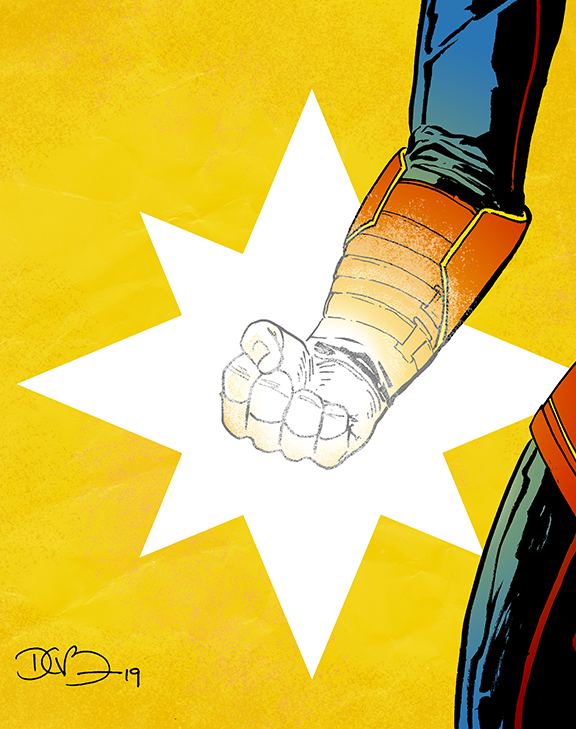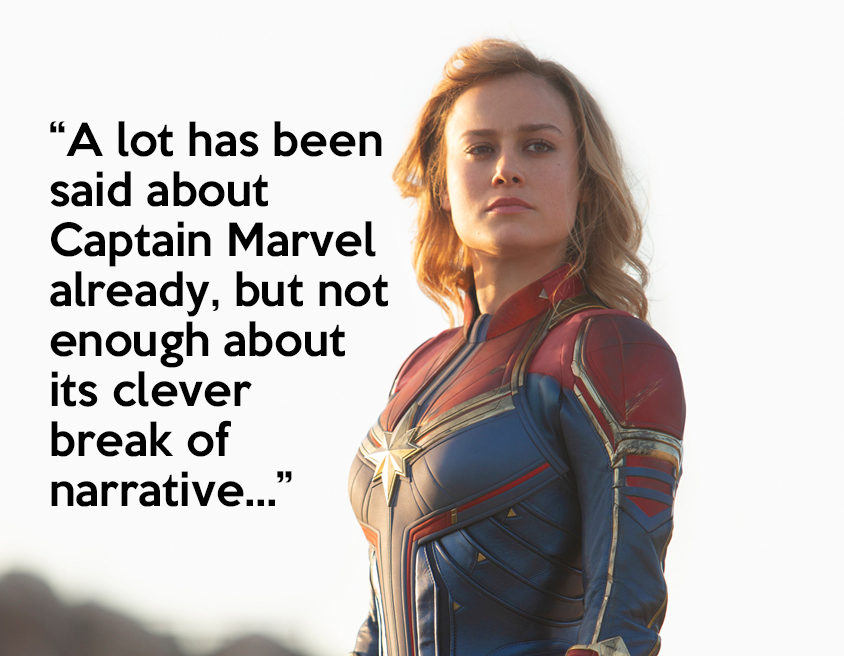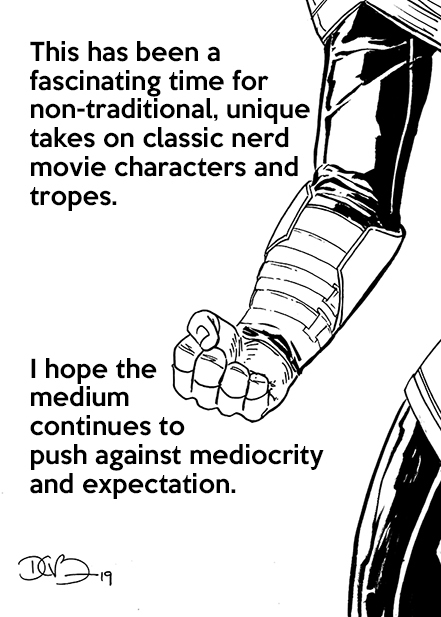Sketch Fridays #60 – Captain Marvel

I found a lot to like in the latest Marvel Studios movie, Captain Marvel. Of course, there’s important stuff to recognize with it being the first female-led Marvel Cinematic Universe film (though the Agent Carter tv series was the first MCU property to be led by a female character, and DC got the female-led movie gold medal with Wonder Woman in 2017), and I don’t want to diminish that achievement. And while that angle did make an impact on me, that mostly hit upon reflection. While watching it, the aspect that stood out to me most was how clever a take the film took on the classic origin story.
While Captain Marvel ostensibly had to be an origin story (since it was the introduction of the character), it took the advice of many fans and, I’m sure, many creators by wanting the approach to the classic structure of an origin story in a new way.
Without spoiling anything, Captain Marvel is smart by taking a non-linear approach to Carol Danvers’ story. At the start of the movie, she (basically) has her superpowers already and is adept at using them. It’s only through the main plot that we (including Danvers herself) get exposed to what happened before the first scene of the movie––the actual origin story, if you will.

I bring this up because it parallels––not in practice or plot––what I tried to do with Volume 1 of Long John. Not to keep bringing it up, but after talking to the Graphic Novel as Literature class––which only ready Volume 1––I really got the chance to sit down and see the effect of that book on readers. It seems that one of the aspects of that book––something discussed in reviews of Volume 1, as well––that the students reacted to was the non-linear or, at the very least, non-traditional approach to introducing Long John as a famous gunslinger. He doesn’t brag about his exploits nor do we ever see those exploits. Instead, his history is related through anecdotal tall tales in Poverty Flat.
While that was indeed a conscious choice on my part, it was mostly driven by the desire to do something different from what I’ve seen before. I came into the comic with a few rules: first, we are never going to see Long John in his old clothes (as a complete set; of course, he got his old hat back in Chapter 2 before losing it); second, no flashbacks (which I did kind of break in Chapter 3).
With those fully in place, there were few avenues left to me to give the readers a sense of who Long John was aside from having other people talk about him to his face (I still think Long John’s line of, “You’ve heard of me, then,” is still one of the funniest things I’ve ever written).
I talk about Long John because a lot has been said of Captain Marvel already, but not enough has been said about its clever break of narrative, which only enhances the incredibly bold and powerful and engaging character the movie and lead actress, Brie Larsen, created in Carol Danvers (whom I warmed to because she does play a key role in X-Men‘s history).

The other aspect of the movie that I really appreciated––and what inspired this week’s drawing––was how the filmmakers realized Danvers’ powers in the film. Again, without giving any spoilers, there is a part where Captain Marvel (whose name I’ve avoided using if only because it’s never used in the film) has a very human moment and reaction to her powers that is simultaneously comedic, exciting, and believable––all tones I try to hit at times throughout the chapters of Long John, as well.
Combined with Battle Angel, this has been a fascinating time for non-traditional, unique takes on classic nerd movie characters and tropes. I hope the medium continues to push against mediocrity and expectation, no matter the pushback those who relish in stale and predictable formulae give. In a sense, it’s kind of the Long John ethos writ large.

Discussion ¬